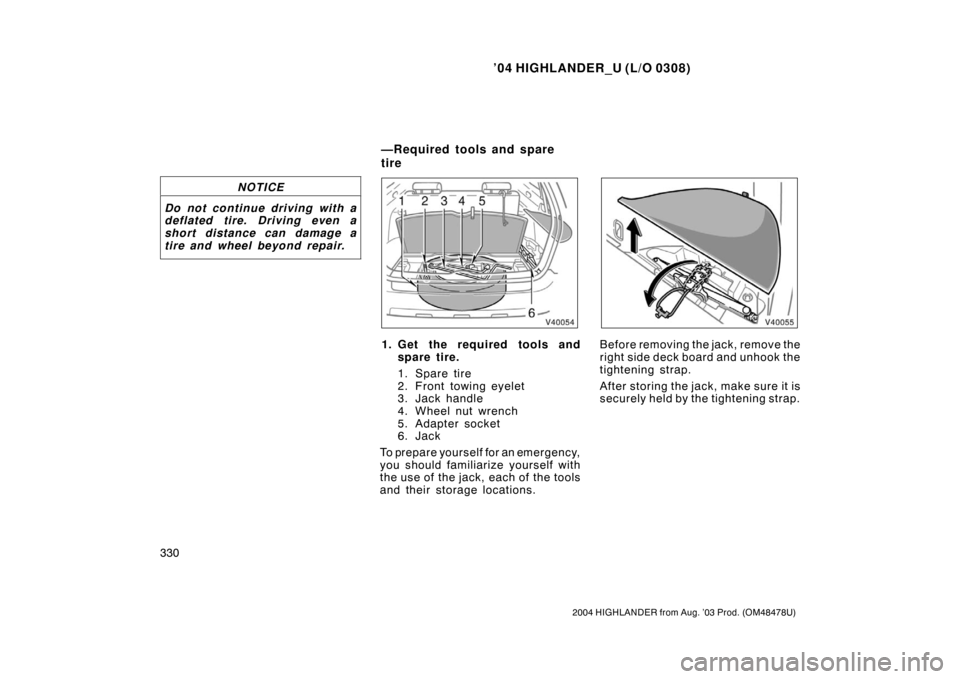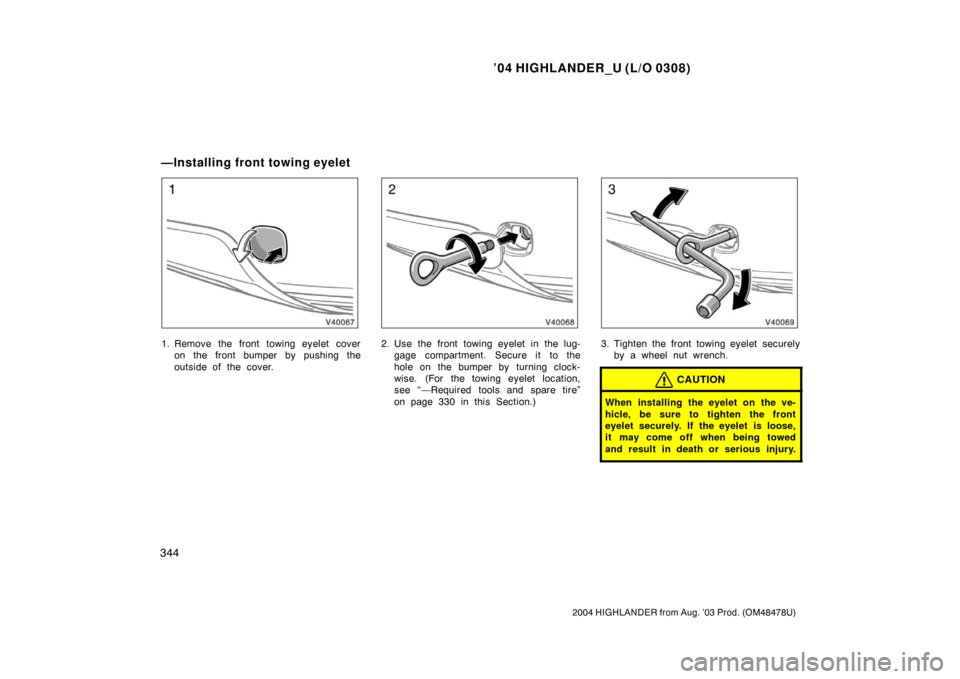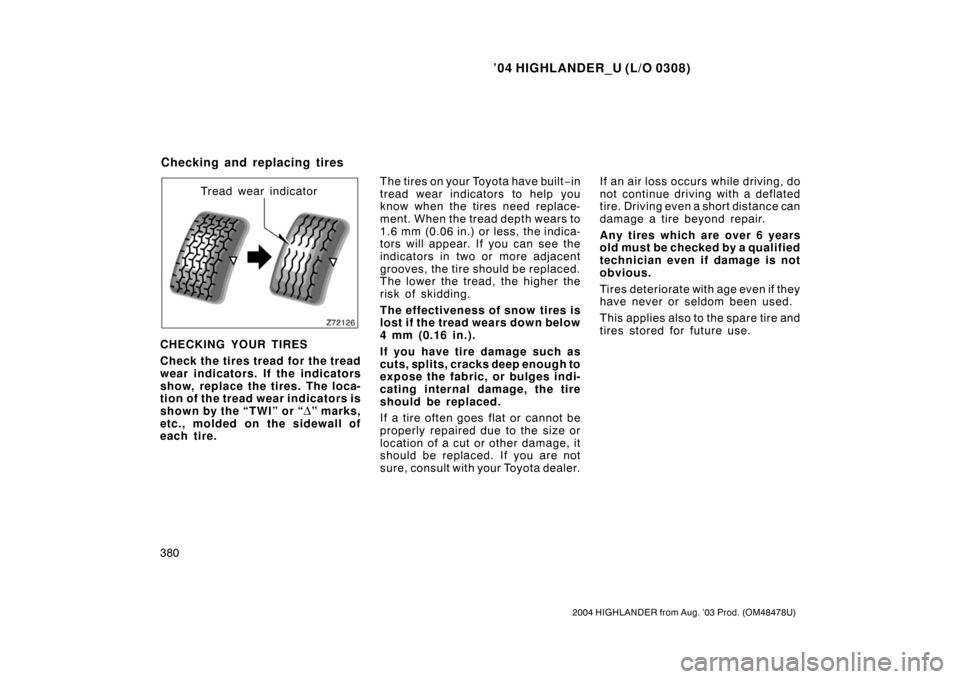spare tire location TOYOTA HIGHLANDER 2004 XU20 / 1.G Owners Manual
[x] Cancel search | Manufacturer: TOYOTA, Model Year: 2004, Model line: HIGHLANDER, Model: TOYOTA HIGHLANDER 2004 XU20 / 1.GPages: 420, PDF Size: 8.81 MB
Page 338 of 420

’04 HIGHLANDER_U (L/O 0308)
330
2004 HIGHLANDER from Aug. ’03 Prod. (OM48478U)
NOTICE
Do not continue driving with a
deflated tire. Driving even a
short distance can damage a
tire and wheel beyond repair.
1. Get the required tools and
spare tire.
1. Spare tire
2. Front towing eyelet
3. Jack handle
4. Wheel nut wrench
5. Adapter socket
6. Jack
To prepare yourself for an emergency,
you should familiarize yourself with
the use of the jack, each of the tools
and their storage locations.Before removing the jack, remove the
right side deck board and unhook the
tightening strap.
After storing the jack, make sure it is
securely held by the tightening strap.
—Required tools and spare
tire
Page 352 of 420

’04 HIGHLANDER_U (L/O 0308)
344
2004 HIGHLANDER from Aug. ’03 Prod. (OM48478U)
1. Remove the front towing eyelet cover
on the front bumper by pushing the
outside of the cover.2. Use the front towing eyelet in the lug-gage compartment. Secure it to the
hole on the bumper by turning clock-
wise. (For the towing eyelet location,
see “—Required tools and spare tire”
on page 330 in this Section.)3. Tighten the front towing eyelet securelyby a wheel nut wrench.
CAUTION
When installing the eyelet on the ve-
hicle, be sure to tighten the front
eyelet securely. If the eyelet is loose,
it may come off when being towed
and result in death or serious injury.
—Installing front towing eyelet
Page 388 of 420

’04 HIGHLANDER_U (L/O 0308)
380
2004 HIGHLANDER from Aug. ’03 Prod. (OM48478U)
Tread wear indicator
CHECKING YOUR TIRES
Check the tires tread for the tread
wear indicators. If the indicators
show, replace the tires. The loca-
tion of the tread wear indicators is
shown by the “TWI” or “
Δ” marks,
etc., molded on the sidewall of
each tire. The tires on your Toyota have built
−in
tread wear indicators to help you
know when the tires need replace-
ment. When the tread depth wears to
1.6 mm (0.06 in.) or less, the indica-
tors will appear. If you can see the
indicators in two or more adjacent
grooves, the tire should be replaced.
The lower the tread, the higher the
risk of skidding.
The effectiveness of snow tires is
lost if the tread wears down below
4 mm (0.16 in.).
If you have tire damage such as
cuts, splits, cracks deep e nough to
expose the fabric, or bulges indi-
cating internal damage, the tire
should be repl aced.
If a tire often goes flat or cannot be
properly repaired due to the size or
location of a cut or other damage, it
should be replaced. If you are not
sure, consult with your Toyota dealer. If an air loss occurs while driving, do
not continue driving with a deflated
tire. Driving even a short distance can
damage a tire beyond repair.
An y ti res wh i ch are over 6 years
old must be checked by a qualified
technician even if damage is not
obvious.
Tires deteriorate with age even if they
have never or seldom been used.
This applies also to the spare tire and
tires stored for future use.
Checking and replacing tires